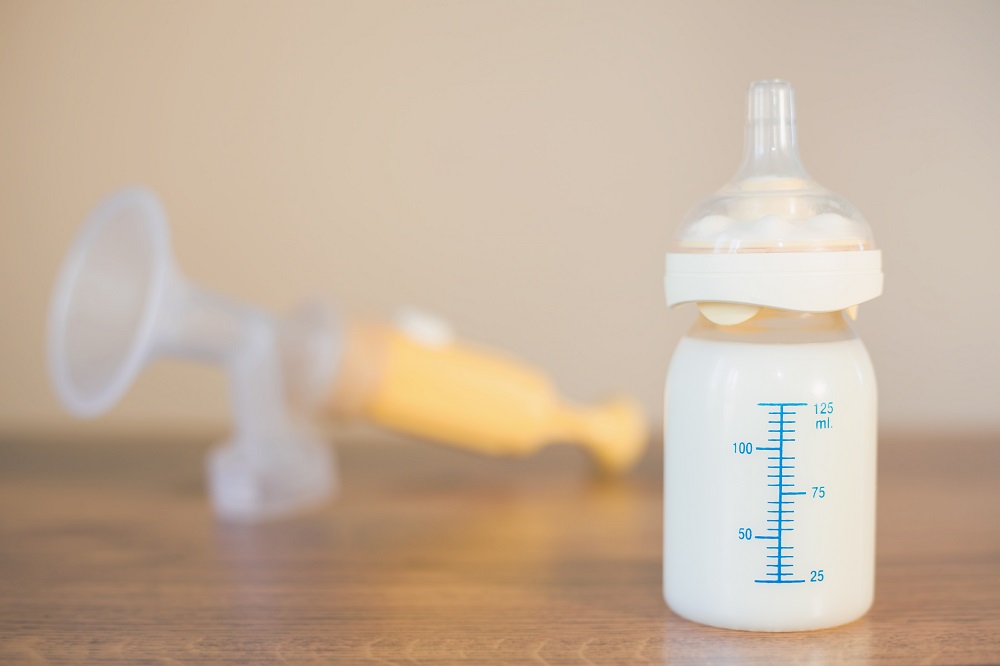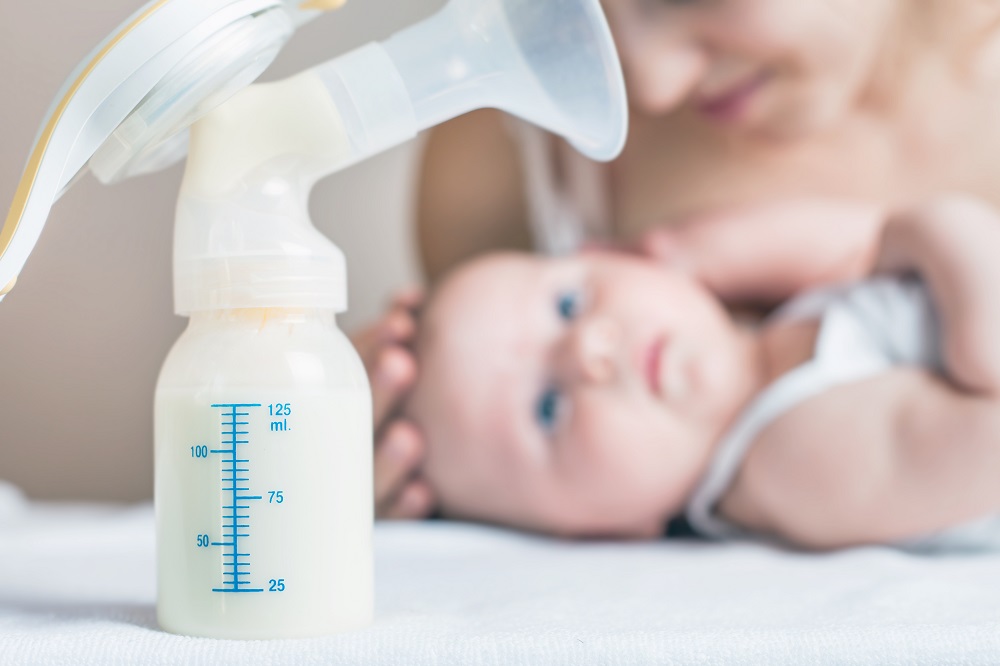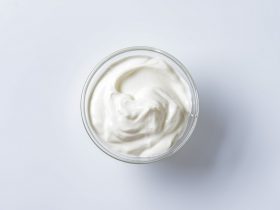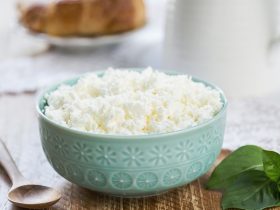Drinking alcohol during pregnancy is out of the question since several guidelines have recommended complete abstinence during this period. But what about after giving birth? Are women during postpartum now allowed to go back sipping a glass of wine if they are also breastfeeding their child?
According to the Centers for Disease Control and Prevention, not drinking alcohol is still the safest option for breastfeeding women. But moderate alcohol consumption of up to one standard drink per day is not known to be harmful to the infant. As an extra precaution, make sure to breastfeed at least 2 hours after alcohol intake.
First we’ll explore some reasons why some women in the postpartum period tend to drink alcohol. Next, we’ll look at if alcohol really gets transferred to the breast milk. Then, we’ll read on some documented effects of alcohol exposure to infants from breastfeeding mothers who consume alcohol. Lastly, we’ll see what recommendations are being given for breastfeeding women regarding alcohol consumption.
Alcohol Consumption During the Postpartum Period
It is known that alcohol use during pregnancy is strongly discouraged because it can lead to Fetal alcohol syndrome, birth defects, miscarriage, and premature births. Hence, many women significantly decrease or completely eliminate their alcohol intake during pregnancy (Haastrup et al., 2014).
However, a lot of women may choose to resume drinking alcohol once they have given birth. In Western countries, about 50 percent of breastfeeding women were reported to drink alcohol at least occasionally (Haastrup et al., 2014). In the United States, epidemiological surveys reported that around 10 percent of breastfeeding women consumed at least one alcoholic drink daily (Mennella, 2001).
In 2004, Pepino & Mennella reported that family and friends are significantly more likely to encourage breastfeeding women to drink alcohol, compared to when they were pregnant. In 2018, Dumas et al. found that 41 percent of women in France thought that risks from alcohol intake during pregnancy and the postpartum period were greater with spirits compared with wine or beer.
The lore of many cultures urges breastfeeding women to drink alcohol for its purported effect on increasing milk production and optimizing infant nutrition (Mennella, 2001). Cultural beliefs about the medicinal effects of alcohol particularly surface during pregnancy and breastfeeding, and suggest the positive effects of its consumption for both the mother and her baby (Pepino & Mennella, 2004).
In a lot of cultures, a centuries-old belief continues to be considered true about alcohol consumption being able to increase breast milk production, facilitate the release of milk from the mammary glands (let-down reflex), and relax both the mother and infant (Mennella, 2001).
It is an enduring myth that drinking alcohol leads to galactogenic, or milk-producing, effects on breastfeeding women. Therefore, women who breastfeed are often advised that alcohol consumption will “improve the quality and quantity of their milk, facilitate milk let-down, and help their babies get a good night’s sleep” (Pepino & Mennella, 2004).
This folklore was so popular in American tradition that, in 1985, Malt Nutrine, a low-alcoholic beer that contains barley malt and hops, was produced and exclusively sold in drug stores for use as a tonic for breastfeeding women and a nutritional beverage for children. Its production was later stopped because it was found to contain more than 0.5 percent alcohol (Mennella, 2001).
Even at present, alcohol continues to be believed as a galactagogue (an agent that promotes lactation). In Mexico, breastfeeding women are encouraged to drink as much as two liters of pulque daily. Pulque is a low-alcoholic beverage made from the fermented juice of the local fruit Agave atrovirens (Mennella, 2001; Pepino & Mennella, 2004).
In Argentina, there is the same belief that alcohol enhances lactation (Pepino & Mennella, 2004). In California, Indochinese women who breastfeed drink wine steeped with herbs. In Spain and Germany, malt beer is considered a “magic elixir” (Mennella, 2001; Pepino & Mennella, 2004).
According to traditional Chinese medicine, the concept of health is viewed as a harmony between yin qi and yang qi, while illness is seen as an imbalance between these two forces (Chen, 2001). A pregnant woman is in a yang state. But during childbirth, she loses heat and becomes in a state of yin (Raven et al., 2007).
Therefore, during postpartum, Chinese families believe that women should be eating food regarded as “hot,” such as meat and eggs. “Hot” foods are believed to enrich the blood and help in the mother’s recovery process, while also encouraging the expulsion of lochia and stimulation of breast milk production. Food can also be made “warmer” by adding ginger and wine (Raven et al., 2007).
However, in contrast to folklore, studies have demonstrated that maternal alcohol intake may actually reduce breast milk production. In addition, some alcohol is transferred to breast milk and, hence, consumed by the infant (Mennella, 2001).
Alcohol Detox Center, Bright Future Recovery even details that excessive alcohol consumption may lead to shortened breastfeeding duration due to decreased milk production.
Alcohol in Breast Milk

Alcohol can be transferred through the breast milk. Thus, breastfeeding mothers who drink alcohol can additionally expose their babies to alcohol by feeding their milk. The amount of ethanol that reaches the breast milk is generally known to be less than 2 percent of the dose consumed by the mother (Mennella, 2001; Pepino & Mennella, 2004), But this amount can go up to 5 to 6 percent of the weight-adjusted maternal dose (Haastrup et al., 2014).
Alcohol levels in both maternal blood and breast milk usually peak about 30 to 60 minutes after a mother has consumed an alcoholic beverage, and decrease thereafter (Mennella, 2001). The length of time that alcohol can be detected in breast milk is generally at 2 to 3 hours per drink after consumption.
However, the more amount of alcohol consumed by the mother, the longer the time that alcohol can be transferred through her breast milk. If one alcoholic drink can be detected in breast milk for up to 2 to 3 hours, two drinks can be detected for up to 4 to 5 hours, three drinks can be detected for up to 6 to 8 hours, and so on.
Meanwhile, there are also substantial individual differences in the timing of peak blood alcohol levels and elimination rates of alcohol (Mennella, 2001), as well as the length of time that alcohol can be transferred through breast milk after drinking. There are several factors that influence these differences, including the following:
- Amount of alcohol consumed
- How fast the alcohol was consumed
- Whether alcohol was consumed with food
- Weight of the mother
- How fast alcohol is metabolized in the mother’s body
Alcohol levels in the breast milk parallel that found in the maternal blood. As long as the mother has significant blood alcohol levels, her breast milk also will contain alcohol. Accordingly, the common practice of pumping milk from the breasts and then discarding the milk immediately (“pumping and dumping”) after drinking alcohol does not change the rate of disappearance of alcohol from breast milk (Mennella, 2001).
Newly produced milk will just contain the same amount of alcohol as long as the mother has measurable alcohol levels in her blood. Therefore, breastfeeding women should refrain from nursing their babies for several hours after drinking alcohol, until their blood alcohol levels have declined significantly (Mennella, 2001). Rather, a mother who has consumed an alcoholic beverage can choose to feed her infant with milk that was previously expressed when she has not been drinking, to reduce her infant’s exposure to alcohol.
Effects of Alcohol Exposure on Breastfeeding Infants
It is not safe for a mother, who is tasked with caring for her infant, to be intoxicated with alcohol. Drinking alcohol can impair one’s judgment and ability to care for an infant. If a mother drinks excessively, she should have some other sober adult care for her infant instead.
While the dangers of alcohol exposure during pregnancy have been well-established, the consequences of alcohol intake during breastfeeding have been far less documented (Haastrup et al., 2014). Little research has been done regarding breastfeeding and effects of alcohol exposure (Mennella, 2001).
Although there is limited research on this topic, adverse effects found include early cessation of breastfeeding and disruption of infant feeding, reduction in infant sleeping time (Lim et al., 2019), and changes in infant behavior and early development and learning (Mennella, 2001).
Evidence about the relationship between alcohol intake during breastfeeding and changes in lactation, infant sleep patterns and infant development are contradicting. Some studies found a reduction in milk production, decreased sleep and delayed development, while others did not (Dumas et al., 2018).
Several hypotheses have been formulated regarding the reasons for the observed effects of alcohol exposure through breast milk on infant development (Mennella, 2001):
- An infant’s developing brain is highly sensitive to even the smallest quantities of alcohol.
- Infants break down and excrete alcohol slower than adults do, hence alcohol can accumulate in the infant’s system after repeated exposure. In 2014, Haastrup et al. stated that infants are only able to metabolize alcohol at a rate around half that of adults.
- Infants have a limited ability to break down alcohol, rendering the alcohol dose more potent.
Early Cessation of Breastfeeding and Disruption of Infant Feeding
Increased levels of alcohol can interfere with milk let-down. Alcohol inhibits the milk ejection reflex, resulting in decreased breast milk production (Haastrup et al., 2014). Studies have shown that infants who breastfed 3 to 4 hours following their mothers’ intake of alcohol consumed 20 percent less breast milk (Mennella, 2001).
This finding was observed to happen not because the infant nursed for shorter periods of time, or rejected the milk because of an altered flavor, but because of a reduction in the quantity (amount) of milk without any change in its quality (caloric content) (Mennella, 2001; Pepino & Mennella, 2004). Over time, excessive alcohol consumption can result in shortened breastfeeding duration because of the reduction in milk let-down.
Reduction in Infant Sleeping Time
Babies whose mothers were light drinkers of alcohol slept significantly shorter during the 3.5 hours after breastfeeding when the mothers had consumed alcohol, compared to when they had none. This finding was observed to be due to a reduction in the amount of time the babies spent in active sleep (Mennella, 2001).
Evidence suggests that exposure to alcohol during breastfeeding affects an infant’s sleep-wake cycle (Pepino & Mennella, 2004). It can make infants have short, quick naps, instead of their usual longer sleeping patterns.
Changes in Infant Development
Gross motor development at one year old is significantly affected in babies who are regularly exposed to alcohol in breast milk (Pepino & Mennella, 2004). Infants of heavy drinkers who were weaned from breastfeeding earlier were found to have significantly higher motor development scores, compared to those who were weaned at an older age and, thus, had a longer period of alcohol exposure (Mennella, 2001).
One study investigating longitudinal child development as affected by substance exposure via breast milk found an association between maternal alcohol intake during breastfeeding and negative effects on child development later in childhood. Reduced abstract reasoning ability was seen at 6 to 7 years old in a dose-dependent manner (Jansson, 2018).
Animal studies have shown that their young can form memories dependent on oro-sensory experiences during breastfeeding (Mennella, 2001). Alcohol consumption by adult rats during lactation leads to infant rats having sensory memories related to alcohol, which increase their own alcohol consumption later in life (Pepino & Mennella, 2004).
This observation is relevant in humans because babies can detect the flavor of alcohol in their mothers’ milk (Mennella, 2001). Human studies have shown that newborns of mothers who drank moderately during pregnancy exhibited increased reactivity to alcohol odor, compared to newborns of mothers who drank less (Pepino & Mennella, 2004).
Since maternal alcohol consumption changes the flavor of breastmilk distinctly, and these changes are detected by the infant, research has shown that sensory learning also occurs when an infant is exposed to alcohol in the breast milk (Pepino & Mennella, 2004). Moreover, the context in which the infant experiences alcohol during breastfeeding includes different elements, such as tactile stimulation, warmth, milk, and the mother’s voice, which reinforce early learning (Mennella, 2001).
Recommendations on Alcohol Consumption During Breastfeeding

Occasional exposure to alcohol during breastfeeding is regarded as insignificant. The Committee on Drugs of the American Academy of Pediatrics (AAP) considers ethanol as a “drug usually permissible with breastfeeding.” But evidence strongly suggests that exposure to alcohol in breast milk affects infants in different ways (Pepino & Mennella, 2004).
Lifelong detrimental consequences of alcohol exposure during pregnancy resulted in precautionary abstinence as recommended by several guidelines. Erring on the side of caution also applies to breastfeeding because alcohol in breast milk can have deleterious effects on the development of an infant (Jackson, 2020).
Thus, health authorities in France recommend abstinence from alcohol during breastfeeding (Dumas et al., 2018). According to the Centers for Disease Control and Prevention (CDC), abstaining from drinking alcohol is still the safest option for breastfeeding women.
However, moderate alcohol consumption is not known to be harmful to the infant. Since possible long-term effects of alcohol exposure in breast milk remain unknown, other guidelines advise breastfeeding women to limit their alcohol intake to 8 ounces of wine or two bottles of beer, and to wait 2 hours after drinking before resuming breastfeeding (Reece-Stremtan & Marinelli, 2015).
The American College of Obstetricians and Gynecologists (ACOG) agrees with the recommendation of waiting at least 2 hours after a single drink before breastfeeding. Additionally, they remind breastfeeding women that regularly drinking more than two drinks per day can be harmful to their infant and may cause drowsiness, weakness and abnormal weight gain (The ACOG, 2021).
Likewise, the AAP recommends breastfeeding women to limit their alcohol intake and refrain from drinking 2 hours prior to breastfeeding. They maintain that if a breastfeeding woman chooses to drink an alcoholic beverage, it is best for her to drink after nursing or expressing milk, rather than before.
The AAP also affirms that alcohol can impact an infant’s motor development and, like smoking, can also decrease breast milk production. Furthermore, alcohol can change the taste of breast milk, making breastfeeding unpleasant to some infants and decreasing the positive effects associated with breastfeeding.
The Dietary Guidelines for Americans (DGA) defines moderate consumption of alcohol as up to one standard drink per day. Meanwhile, a standard “drink” is defined as any of the following drinks, which contain the same amount of pure alcohol by volume:
- 12 ounces of 5 percent beer
- 8 ounces of 7 percent malt liquor
- 5 ounces of 12 percent wine
- 1.5 ounces of 40 percent (80 proof) liquor
It is also important to note, though, that many common drinks contain much more alcohol than listed above. For example, 12 ounces of 9 percent beer already contains an amount of alcohol that is nearly the equivalent of two standard drinks (almost the same as double a 5 percent beer). Breastfeeding women should, therefore, be very vigilant and always check what they are drinking.
On the other hand, even though infants of alcoholic mothers are at high risk for a wide range of medical, psychological, and developmental issues from further alcohol exposure, these babies are found to still benefit significantly from breastfeeding (Reece-Stremtan & Marinelli, 2015). Therefore, drinking alcoholic beverages is not an indication to discourage or stop breastfeeding. Still, consumption of more than one drink per day is not recommended.
Final Thoughts
Contrary to folklore, scientific studies revealed that drinking wine, or any alcohol, during breastfeeding may actually be counterproductive. It does not increase milk production or improve the health of the mother and her child, and actually leads to the opposite effects.
Abstinence is still the safest choice for breastfeeding mothers who prioritize the well-being of their precious children. Although an infant is exposed to just a fraction of the alcohol in her mother’s milk, an infant can eliminate alcohol at only half the rate of an adult. As in pregnancy, there is no level of alcohol in breast milk that is considered safe for an infant.
Breast milk is still the most optimal nutrition for an infant. For breastfeeding mothers who are willing to take some risk and would choose to have a glass of wine, some guidelines permit the intake of one standard drink per day, followed by breastfeeding at least 2 hours after alcohol consumption.
Still a bit apprehensive about wanting to unwind with a glass of wine at the end of your day? Talk to your doctor and together find the best solution for you and your baby.
References
- https://www.cdc.gov/breastfeeding/breastfeeding-special-circumstances/vaccinations-medications-drugs/alcohol.html
- https://www.healthline.com/health/breastfeeding/wine-and-breastfeeding
- https://www.aappublications.org/news/2018/07/30/breastfeeding073018
- https://www.aap.org/en-us/advocacy-and-policy/aap-health-initiatives/fetal-alcohol-spectrum-disorders-toolkit/Pages/Frequently-Asked-Questions.aspx#ques24
- https://www.mayoclinic.org/healthy-lifestyle/infant-and-toddler-health/expert-answers/breast-feeding-and-alcohol/faq-20057985
- Chen, Y. C. (2001). Chinese values, health and nursing. Journal of Advanced Nursing 36(2), 270-273. doi: 10.1046/j.1365-2648.2001.01968.x
- Dumas, A., Toutain, S., Hill, C., & Simmat-Durand, L. (2018). Warning about drinking during pregnancy: Lessons from the French experience. Reproductive Health 15, 20. doi: 10.1186/s12978-018-0467-x
- Haastrup, M. B., Pottegard, A., & Damkier, P. (2014). Alcohol and breastfeeding. Basic & Clinical Pharmacology & Toxicology 114(2), 168-173. doi: 10.1111/bcpt.12149
- Jackson, R. (2020). Wine, food, and health. Wine Science, 947-978. doi: 10.1016/B978-0-12-816118-0.00012-X
- Jansson, L. (2018). Maternal alcohol use during lactation and child development. Pediatrics 142(2), e20181377. DOI: https://doi.org/10.1542/peds.2018-1377
- Lim, A., Van Schalkwyk, M., Hessari, N. M., & Petticrew, M. (2019). Pregnancy, fertility, breastfeeding, and alcohol consumption: An analysis of framing and completeness of information disseminated by alcohol industry-funded organizations. Journal of Studies on Alcohol and Drugs 80(5), 524-533. doi: 10.15288/jsad.2019.80.524
- Mennella, J. (2001). Alcohol’s effect on lactation. Alcohol Research & Health 25(3), 230-234. https://www.ncbi.nlm.nih.gov/pmc/articles/PMC6707164/
- Pepino, M. Y., & Mennella, J. (2004). Advice given to women in Argentina about breast-feeding and the use of alcohol. Pan American Journal of Public Health 16(6), 408-414. doi: 10.1590/s1020-49892004001200007
- Raven, J., Chen, Q., Tolhurst, R., & Garner, P. (2007). Traditional beliefs and practices in the postpartum period in Fujian province, China: A qualitative study. BMC Pregnancy and Childbirth 7, 8. doi: 10.1186/1471-2393-7-8
- Reece-Stremtan, S., & Marinelli, K. (2015). ABM clinical protocol #21: Guidelines for breastfeeding and substance use or substance use disorder, revised 2015. Breastfeeding Medicine 10(3), 135-141. doi: 10.1089/bfm.2015.9992
- The American College of Obstetricians and Gynecologists. (2021). FAQs: Breastfeeding your baby. https://www.acog.org/womens-health/faqs/breastfeeding-your-baby?utm_source=redirect&utm_medium=web&utm_campaign=int




